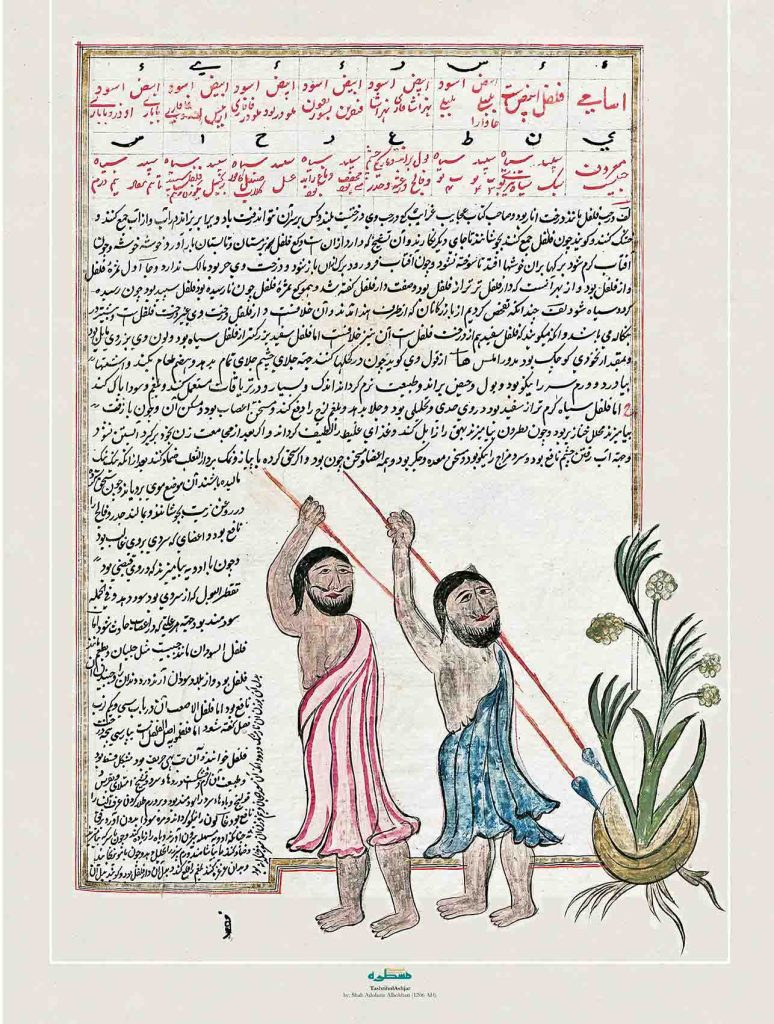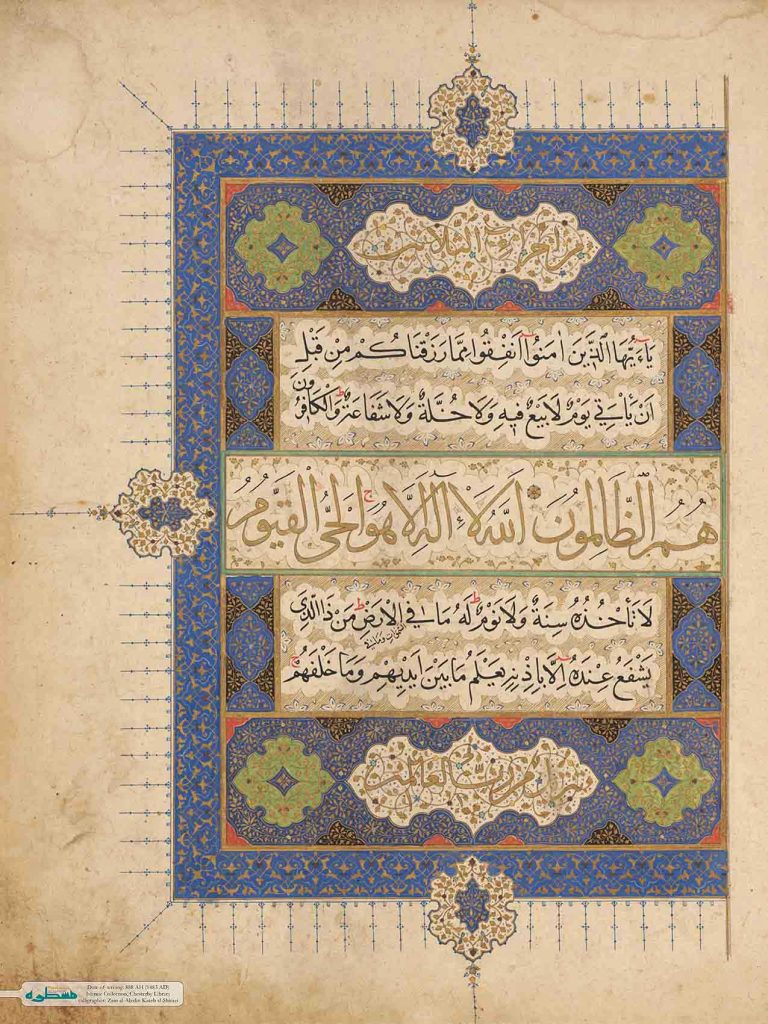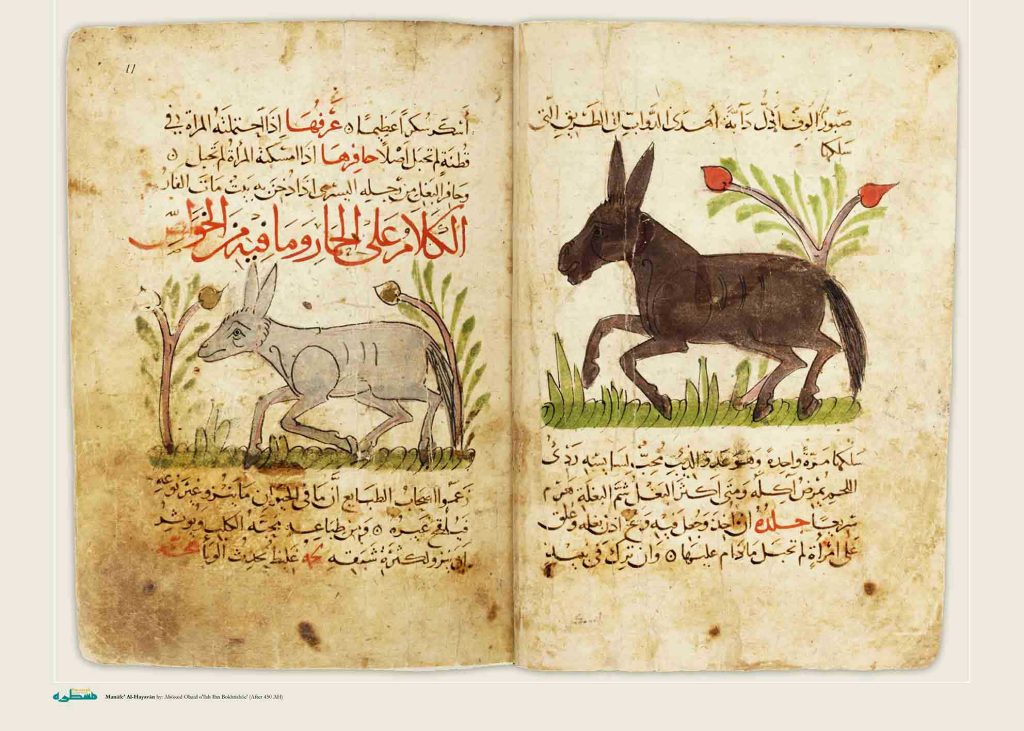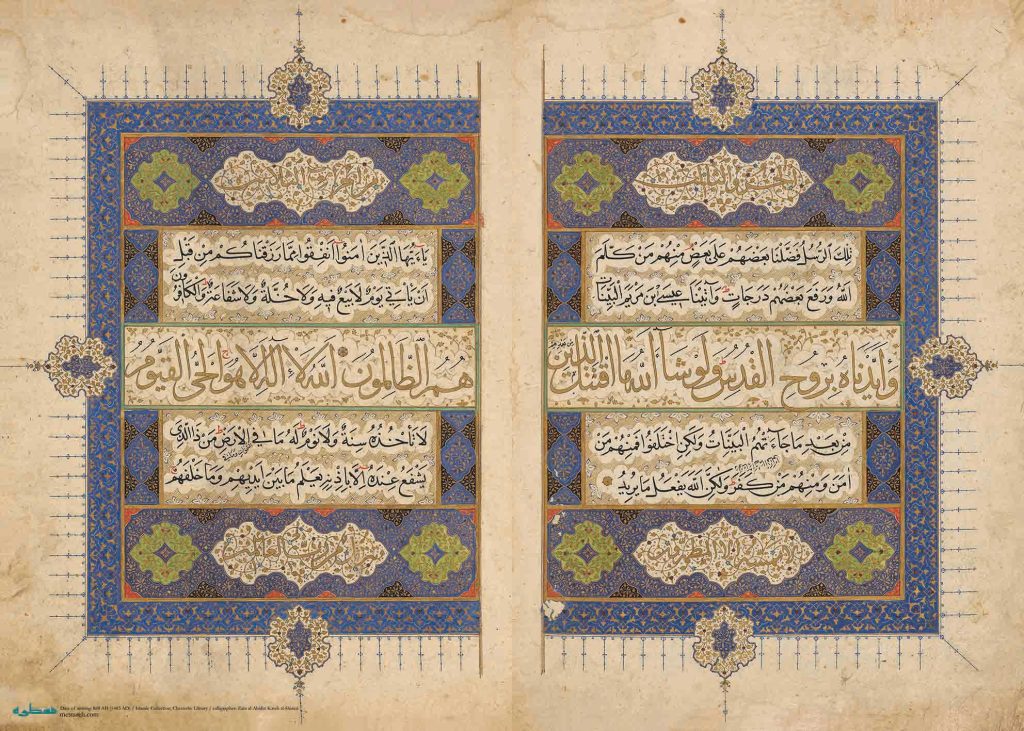The Complete Quran by Ibn Bawab
Calligrapher’s name
Font type
Date of writing
Version
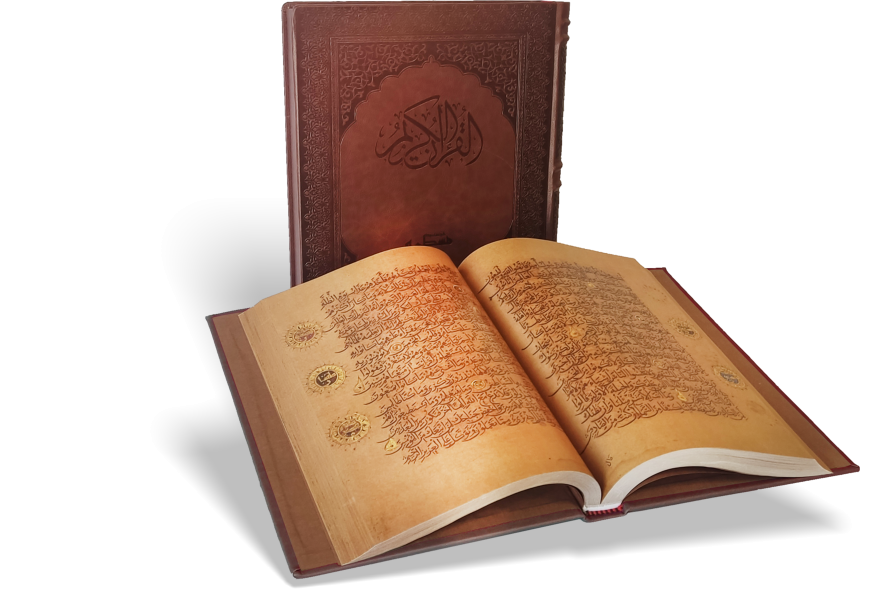
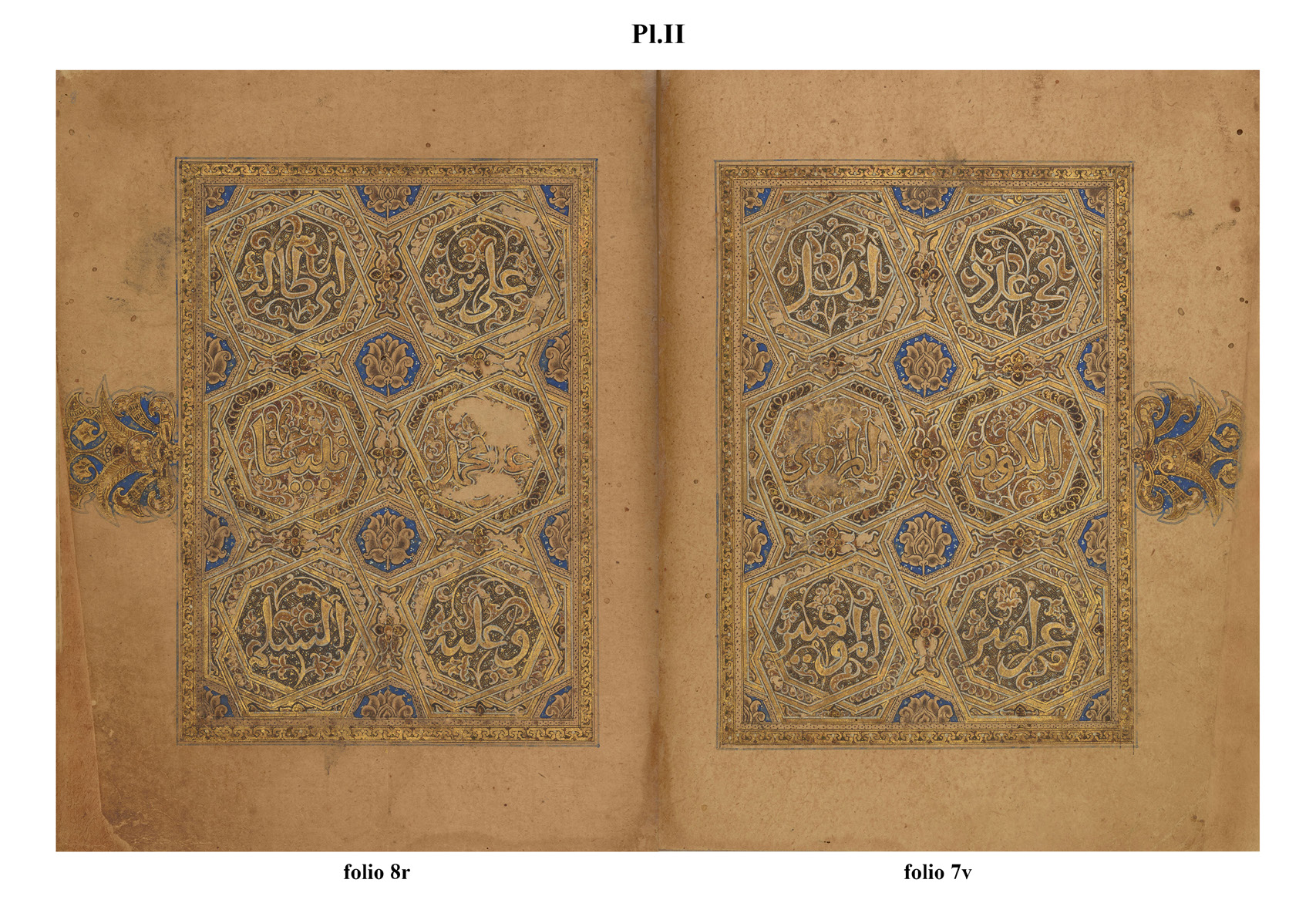
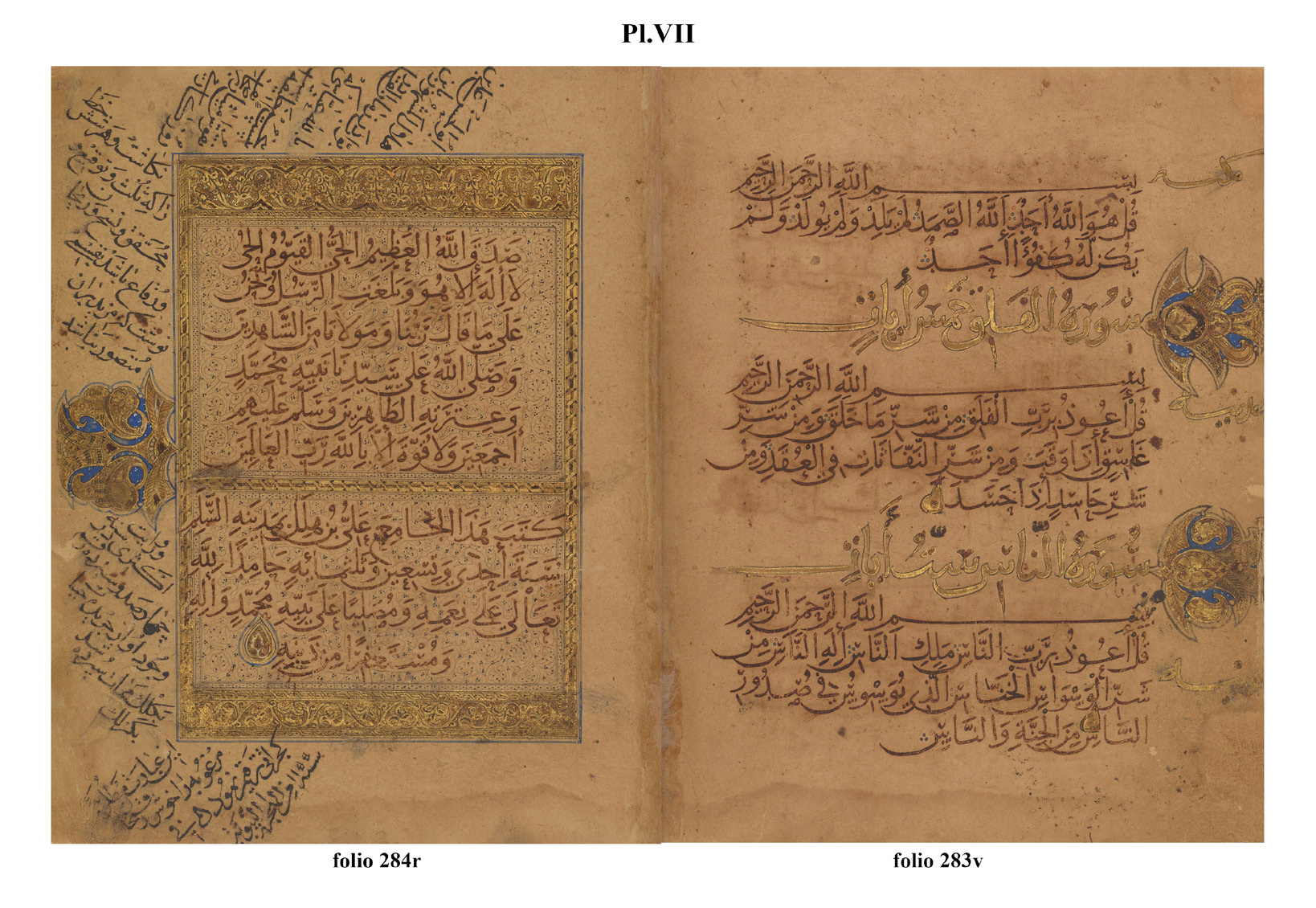
At the start of the fourth
century AH, a style of broken script known as Naskh emerged as the official
script for writing the Quran. The oldest known manuscript in this script is
designated as Is 1431 in the Chester Beatty Library, dating back to 391 AH
(1000-1 CE) and attributed to Ali ibn Hilal, famously known as Ibn Bawab.
Renowned as one of the foremost Arab calligraphers, Ibn Bawab’s manuscript is
considered both his only surviving work and the oldest gilded manuscript in
Arabic.
This Chester Beatty
manuscript comprises 286 leaves, with each page featuring 16 lines of text. The
Quran is skillfully rendered in a bold Naskh script, with letters, words, and
lines closely spaced to maintain clarity and readability. Moreover, the
manuscript incorporates additional scripts, including a form of Thuluth and
pseudo-Kufi. The exquisite illumination of this manuscript, which adds to its
unique charm, is likely the handiwork of Ibn Bawab himself, showcasing his
exceptional talent in both calligraphy and illumination.
اشتراک گذاری :
Form is loading
Please Wait
Easy Form Builder

